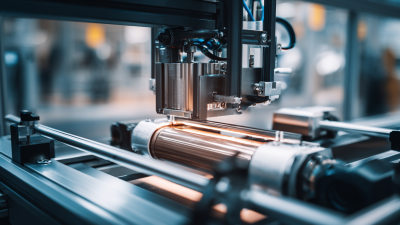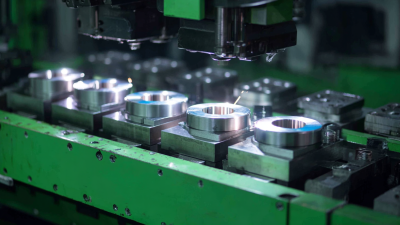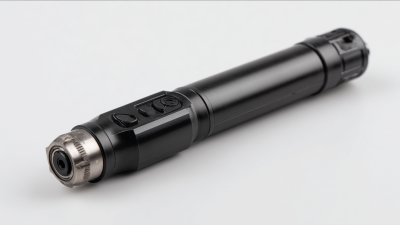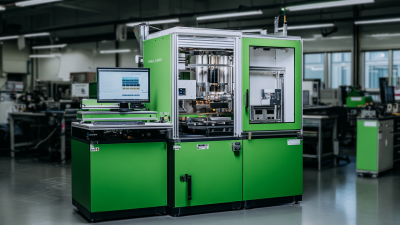Leave Your Message
The manufacturing industry is on the brink of a transformation, driven by technological advancements and the increasing need for efficient production processes. One of the most significant innovations shaping this future is the rise of the Portable Ultrasonic Welder. This compact yet powerful tool is gaining traction among manufacturers due to its ability to create strong, precise welds in varied materials without the need for bulky equipment.

According to a recent report by the Global Ultrasonic Welding Equipment Market, the sector is expected to grow at a CAGR of 6% over the next five years, driven by the increasing demand for portable solutions across multiple industries.
Experts in the field acknowledge the tremendous potential of Portable Ultrasonic Welders. Dr. Emily Carter, a leading specialist in ultrasonic technology, states, "The evolution of portable welding solutions is not just a trend; it’s a necessary shift towards more adaptive and efficient manufacturing practices." As industries such as automotive, electronics, and textiles increasingly adopt these portable systems, the implications for productivity and versatility are profound.
Manufacturers can now achieve high-quality welds in less time and with greater flexibility, which could redefine production methods for years to come.
With the advent of Portable Ultrasonic Welders, we are witnessing a paradigm shift that encapsulates the essence of Industry 4.0—where agility, precision, and innovation converge to enhance manufacturing processes. As we explore this emerging technology, understanding its impact on the future landscape of manufacturing becomes imperative.
The advancement of portable ultrasonic welders is significantly influenced by several innovative technologies that are reshaping the manufacturing landscape. One of the leading drivers is the development of more efficient ultrasonic transducers, which convert electrical energy into high-frequency sound waves. These new transducers allow for greater precision and stronger welds, making it easier to join materials that range from plastics to metals. As a result, manufacturers can achieve higher-quality outputs with less waste and reduced energy consumption.
Furthermore, the integration of smart technology into portable ultrasonic welders has made them more user-friendly and effective. Features such as real-time monitoring and automatic adjustments based on material thickness or type enhance the welding process's reliability. The incorporation of IoT (Internet of Things) capabilities also means that these welders can be remotely monitored and controlled, facilitating smoother operations in various settings, from small workshops to large manufacturing plants. This leap in technology not only boosts productivity but also positions portable ultrasonic welders as versatile tools capable of adapting to the evolving demands of modern manufacturing.
Portable ultrasonic welders are transforming modern manufacturing processes, offering a myriad of advantages that enhance efficiency and precision. According to a recent report by MarketsandMarkets, the ultrasonic welding market is projected to reach USD 3.5 billion by 2025, growing at a CAGR of 6.7%. This growth is driven by the rising demand for automation and the need for high-quality joinery in various sectors, including automotive, electronics, and medical devices.
One of the primary benefits of portable ultrasonic welders is their ability to create strong, consistent welds without the need for additional adhesives or fasteners. This technology not only reduces material costs but also minimizes production time. Moreover, portable welders can be easily integrated into existing workflows, making them an ideal solution for manufacturers looking to optimize processes while maintaining flexibility. The ability to perform on-site repairs and modifications notably contributes to decreasing downtime and increasing overall productivity.
**Tips:** When considering the implementation of portable ultrasonic welders, ensure that your team undergoes comprehensive training to maximize the machine’s capabilities. Additionally, regularly evaluate your welding parameters to maintain optimal performance and quality. Investing in high-quality ultrasonic components can lead to long-term savings by reducing maintenance costs and enhancing productivity.
The landscape of manufacturing is evolving with the advent of portable ultrasonic welders, presenting both advantages and challenges compared to traditional welding methods. Traditional ultrasonic welding typically involves larger, stationary machines that may require extensive setup and dedicated workspace. These systems are known for their high precision and reliability, making them suitable for industrial applications where volume and consistency are critical. However, their bulkiness and fixed nature can limit versatility, especially for smaller operations or projects requiring mobility.
In contrast, portable ultrasonic welders offer significant flexibility and convenience. Designed to be lightweight and easily transportable, they empower operators to perform welding tasks in various locations without the need for a permanent setup. This adaptability is particularly beneficial for on-site repairs or for businesses that handle multiple projects across different venues. However, while portable devices have made substantial advancements in performance and technology, they may not always match the power output and efficiency of their traditional counterparts during large-scale industrial processes. As the industry continues to adapt, manufacturers will need to weigh the benefits of portability against the demands of their specific applications.
The demand for portable welding solutions has surged in recent years, primarily driven by advancements in technology and the need for flexibility in manufacturing processes. Portable ultrasonic welders, known for their speed and efficiency, are becoming indispensable in industries such as automotive, electronics, and medical device manufacturing. Companies are increasingly looking for ways to streamline their operations and reduce overhead costs, making portable welders an attractive option. These tools not only enhance productivity but also provide manufacturers with greater mobility, allowing them to perform welding tasks in various locations without the need for heavy equipment.
When considering the adoption of portable ultrasonic welders, it's essential to evaluate the specific needs of your manufacturing operations. **Tip:** Assess the materials you'll be working with, as different ultrasonic welders are optimized for various types of plastics and composites. Understanding the limitations and capabilities of the tools can greatly impact the quality of the welds produced.
Additionally, training staff to effectively use portable welding equipment is crucial for maximizing their potential. **Tip:** Invest in comprehensive training programs that cover both the technical aspects and safety protocols of operating ultrasonic welders. This investment not only promotes worker safety but also ensures consistent and high-quality outcomes in the manufacturing process.
| Year | Global Market Size (USD Million) | CAGR (%) | Key Applications | Emerging Markets |
|---|---|---|---|---|
| 2020 | 150 | 6.5 | Automotive, Electronics | North America, Europe |
| 2021 | 160 | 7.0 | Consumer Goods, Medical Devices | Asia-Pacific, South America |
| 2022 | 175 | 7.5 | Aerospace, Telecommunications | Middle East, Africa |
| 2023 | 190 | 8.0 | Packaging, Robotics | Latin America, Southeast Asia |
| 2024 | 210 | 8.5 | Industrial Equipment, Construction | Emerging Economies |
The advent of artificial intelligence (AI) and automation is poised to revolutionize ultrasonic welding, fundamentally altering manufacturing processes. According to a recent market report by Grand View Research, the global ultrasonic welding market is expected to reach $6.5 billion by 2028, growing at a CAGR of 7.4%. AI technology can enhance the precision and efficiency of ultrasonic welding by enabling predictive maintenance, real-time quality control, and process optimization. This not only decreases downtime but also significantly reduces waste, aligning with the industry’s shift towards sustainability.
Furthermore, automation in ultrasonic welding processes allows for the integration of intelligent systems that can learn from data patterns. A report from Mordor Intelligence highlights that automated welding systems are becoming increasingly desirable, with the automotive and electronics sectors leading the demand. By incorporating machine learning algorithms, manufacturers can continuously improve the welding parameters, ensuring stronger, more consistent welds. As portable ultrasonic welders gain traction, their ability to integrate AI-driven solutions will likely play a crucial role in the future of manufacturing, driving innovation and efficiency in a competitive landscape.






